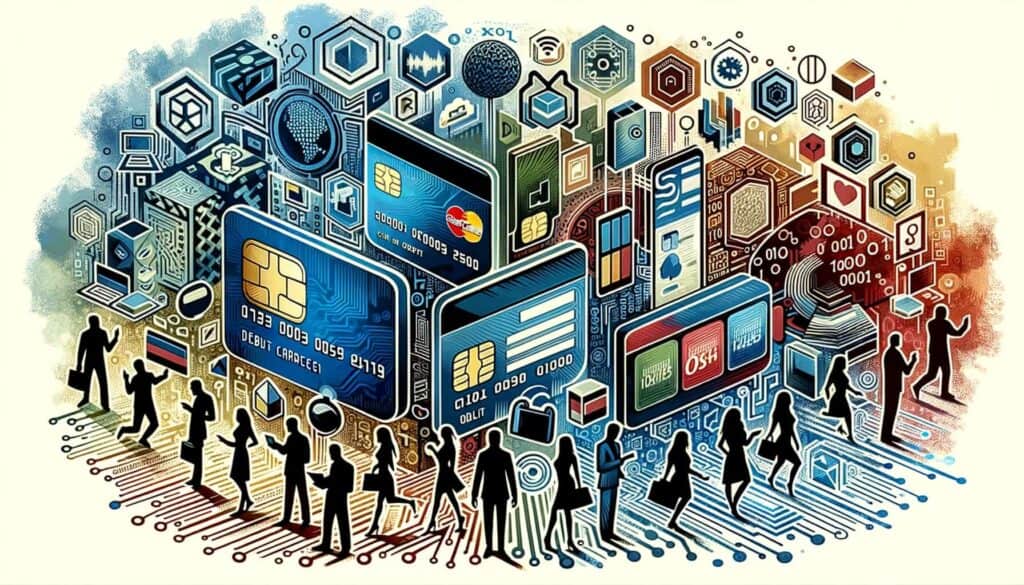
By Crystal Hopkins January 9, 2025
Payment processing is an essential component of any business that accepts electronic payments. It refers to the entire process of authorizing, capturing, and settling transactions made through various payment methods, such as credit cards, debit cards, mobile wallets, and online payment platforms. In today’s digital age, payment processing has become a fundamental aspect of conducting business, enabling seamless and secure transactions between buyers and sellers.
Understanding the Basics of Payment Processing
At its core, payment processing involves the transfer of funds from the customer’s account to the merchant’s account. This process typically includes several steps, starting with the customer initiating a payment and ending with the merchant receiving the funds. The credit card processing system acts as an intermediary, facilitating the secure transfer of funds and ensuring that the transaction is completed accurately and efficiently.
The Role of Payment Processors in the Financial Ecosystem

Payment processors play a crucial role in the financial ecosystem by connecting merchants, customers, and financial institutions. These entities act as intermediaries, facilitating the flow of funds and ensuring that transactions are processed securely and efficiently.
Payment processors are responsible for verifying the customer’s payment details, authorizing the transaction, and transferring the funds to the merchant’s account. They also handle the necessary communication between the various parties involved, including the customer’s bank and the merchant’s bank.
Different Types of Payment Processing Methods

There are several types of payment processing methods available to businesses today. The most common methods include credit card processing, debit card processing, mobile wallet payments, and online payment platforms. Credit card processing involves the use of credit cards, which allow customers to make purchases on credit and pay for them at a later date.
Debit card processing, on the other hand, involves the use of debit cards, which deduct funds directly from the customer’s bank account. Mobile wallet payments and online payment platforms enable customers to make payments using their smartphones or computers, respectively.
How Payment Processing Works: A Step-by-Step Guide
The credit card processing process typically involves several steps, starting with the customer initiating a payment and ending with the merchant receiving the funds. Here is a step-by-step guide to how payment processing works:
1. Customer initiates a payment: The customer selects the desired products or services and proceeds to the checkout page.
2. Payment details are entered: The customer enters their payment details, such as credit card information or bank account details.
3. Payment information is transmitted: The payment information is securely transmitted to the payment processor.
4. Payment is authorized: The payment processor verifies the customer’s payment details and checks for sufficient funds or credit availability.
5. Funds are transferred: If the payment is authorized, the payment processor transfers the funds from the customer’s account to the merchant’s account.
6. Transaction is settled: The payment processor settles the transaction by updating the merchant’s account and providing confirmation to both the customer and the merchant.
Key Players in the Payment Processing Industry

The payment processing industry consists of various key players, each with a specific role in facilitating electronic transactions. These players include payment processors, payment gateways, acquiring banks, issuing banks, and card networks.
Payment processors, such as PayPal, Stripe, and Square, act as intermediaries between the customer and the merchant, handling the authorization and settlement of transactions. Payment gateways, such as Authorize.Net and Braintree, provide the technology infrastructure that enables secure transmission of payment information between the customer, the merchant, and the payment processor.
Acquiring banks are financial institutions that work with merchants to set up and manage their payment processing accounts. Issuing banks, on the other hand, issue credit and debit cards to customers and are responsible for authorizing and settling transactions made by their cardholders. Card networks, such as Visa, Mastercard, and American Express, provide the infrastructure that enables the acceptance and processing of card payments.
Benefits and Advantages of Efficient Payment Processing

Efficient payment processing offers numerous benefits and advantages for businesses. Firstly, it enables businesses to accept a wide range of payment methods, catering to the preferences of their customers. By offering multiple payment options, businesses can attract more customers and increase sales.
Secondly, efficient payment processing ensures faster and more convenient transactions. Customers can make payments quickly and securely, without the need for cash or physical cards. This convenience can lead to increased customer satisfaction and loyalty.
Furthermore, efficient payment processing reduces the risk of fraud and chargebacks. Payment processors employ advanced security measures, such as encryption and tokenization, to protect sensitive payment information and prevent unauthorized access. This helps businesses build trust with their customers and safeguard their financial interests.
Challenges and Risks in Payment Processing
While payment processing offers numerous benefits, it also comes with its fair share of challenges and risks. One of the main challenges is ensuring the security of payment information. With the increasing prevalence of cyberattacks and data breaches, payment processors must invest in robust security measures to protect customer data and prevent unauthorized access.
Another challenge is managing the complexity of payment processing systems. As businesses expand and accept payments from various channels, such as online, in-store, and mobile, they need to integrate multiple payment systems and ensure seamless communication between them. This requires careful planning and coordination to avoid technical glitches and delays in transaction processing.
Additionally, payment processors face the risk of financial losses due to fraudulent transactions and chargebacks. Fraudsters are constantly evolving their tactics, making it essential for payment processors to stay vigilant and implement effective fraud prevention measures. Chargebacks, which occur when customers dispute a transaction and request a refund, can also impact the profitability of businesses and payment processors.
Emerging Trends and Innovations in Payment Processing
The payment processing industry is constantly evolving, driven by technological advancements and changing consumer preferences. One of the emerging trends is the rise of mobile payments. With the increasing adoption of smartphones and mobile wallets, customers are increasingly using their mobile devices to make payments. This trend has led to the development of innovative payment solutions, such as Apple Pay and Google Pay, which enable customers to make secure and convenient mobile payments.
Another trend is the integration of artificial intelligence (AI) and machine learning (ML) in payment processing systems. AI and ML algorithms can analyze vast amounts of data in real-time, enabling payment processors to detect and prevent fraudulent transactions more effectively. These technologies can also personalize the payment experience for customers, offering tailored recommendations and promotions based on their purchasing behavior.
Furthermore, blockchain technology is gaining traction in the payment processing industry. Blockchain, a decentralized and transparent ledger, offers enhanced security and traceability for transactions. It has the potential to revolutionize cross-border payments by reducing costs, increasing speed, and eliminating intermediaries.
Choosing the Right Payment Processing Solution for Your Business
When selecting a payment processing solution for your business, several factors need to be considered. Firstly, you should assess the payment methods that your customers prefer and ensure that the payment processor supports those methods. Offering a variety of payment options can enhance customer satisfaction and increase sales.
Secondly, you should evaluate the security measures implemented by the payment processor. Look for features such as encryption, tokenization, and fraud detection tools to protect your customers’ payment information and minimize the risk of data breaches.
Additionally, consider the fees and pricing structure of the payment processor. Some processors charge a flat fee per transaction, while others charge a percentage of the transaction amount. It is important to understand the pricing model and compare it with your business’s transaction volume to ensure that it aligns with your budget.
Furthermore, consider the integration capabilities of the payment processor. If you have an online store or use specific software for your business operations, ensure that the payment processor can seamlessly integrate with your existing systems. This will streamline your operations and provide a better experience for both you and your customers.
FAQs
Q.1: What is payment processing?
Payment processing refers to the entire process of authorizing, capturing, and settling transactions made through various payment methods, such as credit cards, debit cards, mobile wallets, and online payment platforms.
Q.2: How does payment processing work?
Payment processing involves several steps, including authorization, authentication, and settlement. When a customer makes a purchase, the payment processor acts as an intermediary between the customer’s bank and the merchant’s bank, ensuring that the transaction is completed smoothly and securely.
Q.3: What are the different types of payment processing methods?
The different types of payment processing methods include credit card processing, debit card processing, mobile wallet payments, and online payment platforms.
Q.4: What are the benefits of efficient payment processing?
Efficient payment processing offers benefits such as faster and more convenient transactions, reduced risk of fraud and chargebacks, valuable data insights, and a wide range of payment options for consumers.
Q.5: What are the challenges in payment processing?
Challenges in payment processing include ensuring the security of payment data, managing multiple stakeholders in the payment ecosystem, and staying compliant with regulatory requirements.
Conclusion
In conclusion, payment processing is a critical aspect of modern business operations. It enables businesses to accept electronic payments, ensuring faster, more convenient, and secure transactions.
By understanding the basics of payment processing, the role of payment processors, the different types of payment methods, and how payment processing works, businesses can make informed decisions and choose the right payment processing solution for their needs.
While payment processing offers numerous benefits, it also comes with challenges and risks, such as security threats and fraud. However, with emerging trends and innovations, such as mobile payments, AI and ML integration, and blockchain technology, the payment processing industry continues to evolve, offering new opportunities for businesses to enhance their payment processes and improve customer experiences.